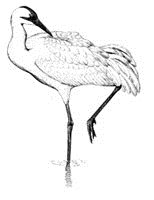North American Crane Working Group

Proceedings of the North American Crane Workshop
Date of this Version
2023
Document Type
Article
Citation
Proceedings of the North American Crane Workshop (2023) 16: 167–181
Abstract
In 2001, a reintroduced population of whooping cranes (Grus americana), the Eastern Migratory Population (EMP), was established in the eastern United States. There has been no assessment of habitat use of the EMP across the current winter distribution. During 2 winters, we used radio-telemetry to track groups of cranes each for 1 day. We grouped sites into 3 regions, based on natural clustering: north (Illinois, Indiana, Kentucky), central (Tennessee, Alabama), and south (Georgia, Florida, Louisiana). Home ranges decreased in size from north to south (4.9 ± 2.8, 3.1 ± 1.0, and 2.3 ± 0.5 km2, respectively). In the north and central regions, cranes often used agricultural areas, including those with hydric soil that were potentially inundated during winter (e.g., flooded fields). Home ranges in the south had the greatest proportion of wetlands (south: 37%, central: 7%, north: 1%). Wintering sites in the south potentially had higher habitat quality than other regions (small home ranges with many wetlands); however, many individuals wintered further north, indicating there was a potential tradeoff with migration distance or cranes adapted to new habitats. More research on the effects of winter habitat use on the population growth of the EMP may clarify the importance of high-quality habitat.


Comments
United States government work